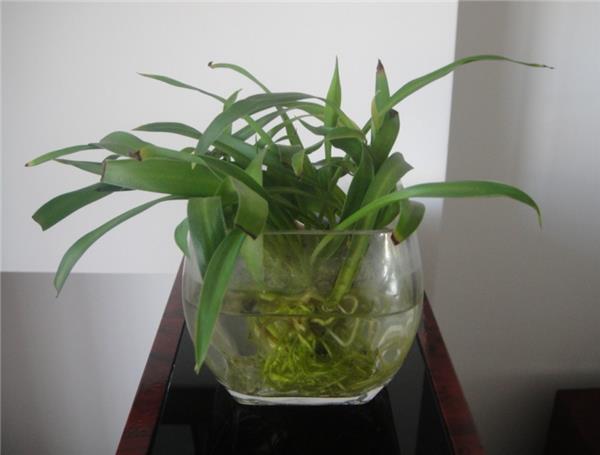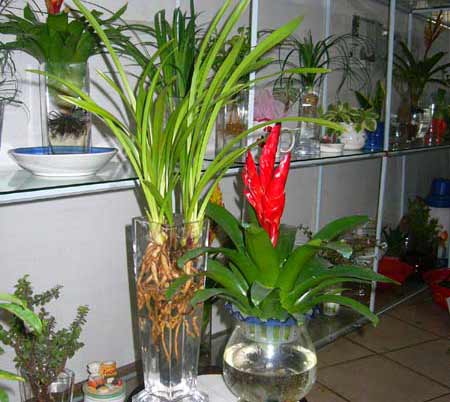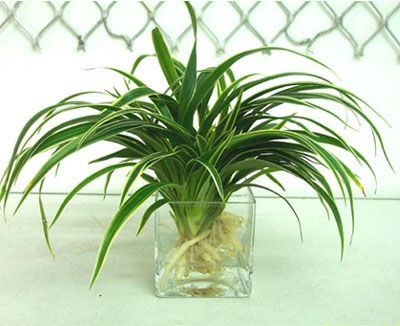[can orchids be raised in water] how to raise orchids well
Can orchids be raised in water? Orchid is actually an orchid. There are many kinds of orchids. It is a very popular indoor flower. Because of its many styles and good flower shape, it is known as the first indoor flower. And breeding bluegrass also needs to pay special attention to skills, because it belongs to the more delicate flowers and plants. The following article will describe in detail the breeding methods of bluegrass.

Can orchids be raised in water?
Yes
The hydroponic culture of orchid is a new cultivation method of soaking the orchid root directly in the water with culture medium without soil or other cultivation medium. this method is easy to learn and easy to master. It is mainly divided into six steps:
1. Choose special hydroponic flowerpot. The hydroponic orchid cultivation uses a special hydroponic flowerpot with no hole at the bottom and a double-layer mesh screen at the bottom, the culture medium is contained in the outer pot, and the inner basin is a grid sieve with a mesh size of 2 "m × 2" m. The ribs between the meshes are fixtures for holding bulbs and orchid plants, such as stones or sponges.
2. Transplant orchid plant. Pluck up the orchid plants planted in the soil to remove rotten roots and old roots. if there are too many roots, you can cut off part of the roots with scissors close to the bulbs, and then rinse the mud and dirt on the roots with clean water.

3. Disinfection. The orchid plant was disinfected once before it was implanted into a hydroponic pot. the whole plant was immersed in 100 mg / L potassium permanganate solution for 15 minutes, and then rinsed with clean water.
4. Implant hydroponic pot. The roots were divided into 3 groups and inserted into 2 Mel 3 sieve holes. The roots that had passed through the sieve foramen were pulled slightly by hand so that the bulb clung to the cross rib in the middle of the sieve foramen.
5. Fixed orchids. Use one hand to straighten the orchid plant, and the other hand to hold the washed 3m × 5m pebbles around the plant and shake it slightly around the inner sieve, and the orchid plant will be fixed in the center of the inner sieve.
6. Add the culture medium. Rinse the fixed stone with clean water again, fill the outer basin with clean water, and put the orchid culture liquid in the water. In this way, the migration work is complete.

Why can't orchids be raised in ordinary soil?
Let's first analyze the changes in the dry and wet state of the soil after watering: "wet" → "wet", "→" moist "→" and "→" dry. Among them, "wet", "wet" or "dry" or "dry" are not conducive to the growth of orchid root, only "run" is the most suitable for orchid growth. Ordinary soil continues to be "wet" or "wet" for too long after watering, which exceeds the time that orchids can bear, so tragedies occur naturally, so ordinary soil is not suitable for orchid cultivation.
Thus it can be seen that the fundamental goal of orchid cultivation is to shorten the time when the plant is in the "wet" and "dry" state and prolong the time in the "moist" state. No matter the selection of plant materials, the selection of orchid pots (the size and texture of orchid pots also have a great influence on the change of water content of plants), or watering, they are all carried out around this goal.
It can also be seen from here that the water retention or hydrophobic characteristics of the plant determine the change of the water content of the plant to a great extent, and even determine the success or failure of orchid cultivation. It can be said that watering is the external factor that determines the change of plant water content, while plant material is the internal cause that determines the change of plant water content. In order to control the water content of the plant material, the prerequisite is that the plant material must be selected.

This is the end of the breeding method of bluegrass. Bluegrass, an extremely delicate flower, needs to be carried out in strict accordance with its breeding skills in order to ensure its growth. There are many kinds of bluegrass, and there are many valuable varieties, known as the boutique of flowers, its value is also very high, often appear in various exhibitions. The beauty of bluegrass makes countless people proud of it. Keeping it indoors can beautify the environment and edify the body and mind.
Related
- Wuhan Hospital Iron Tree Blooming Result Was Instantly Frightened by the Gardener Master
- Which variety of camellia is the most fragrant and best? Which one do you like best?
- What is the small blue coat, the breeding methods and matters needing attention of the succulent plant
- Dormancy time and maintenance management of succulent plants during dormancy
- Minas succulent how to raise, Minas succulent plant pictures
- What are the varieties of winter succulent plants
- How to raise succulent plants in twelve rolls? let's take a look at some experience of breeding twelve rolls.
- Attention should be paid to water control for succulent plants during dormant period (winter and summer)
- Watering experience of twelve rolls of succulent plants
- Techniques for fertilizing succulent plants. An article will let you know how to fertilize succulent plants.



